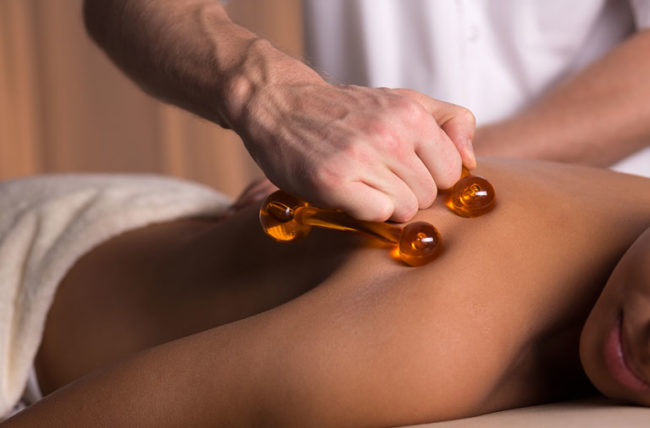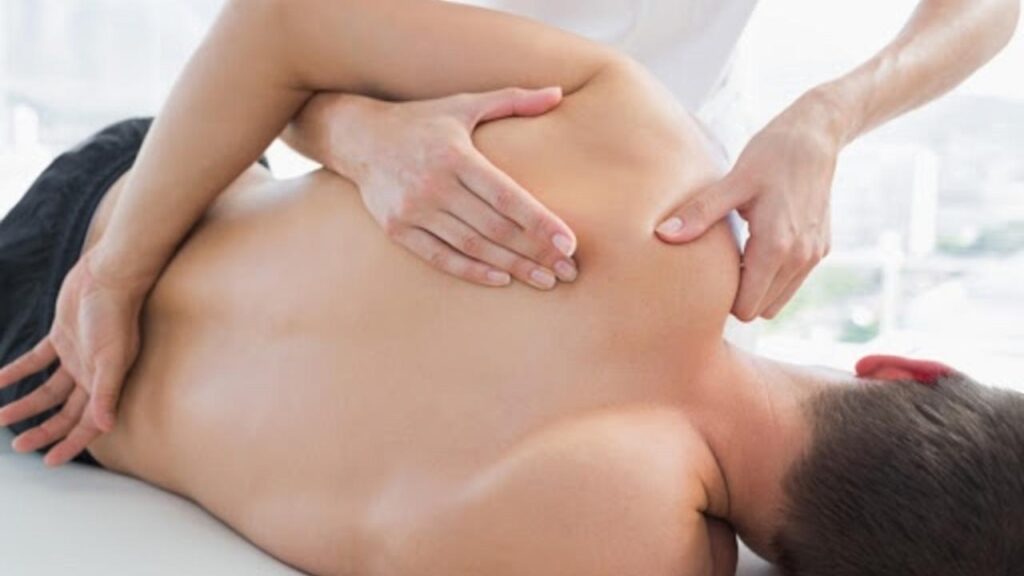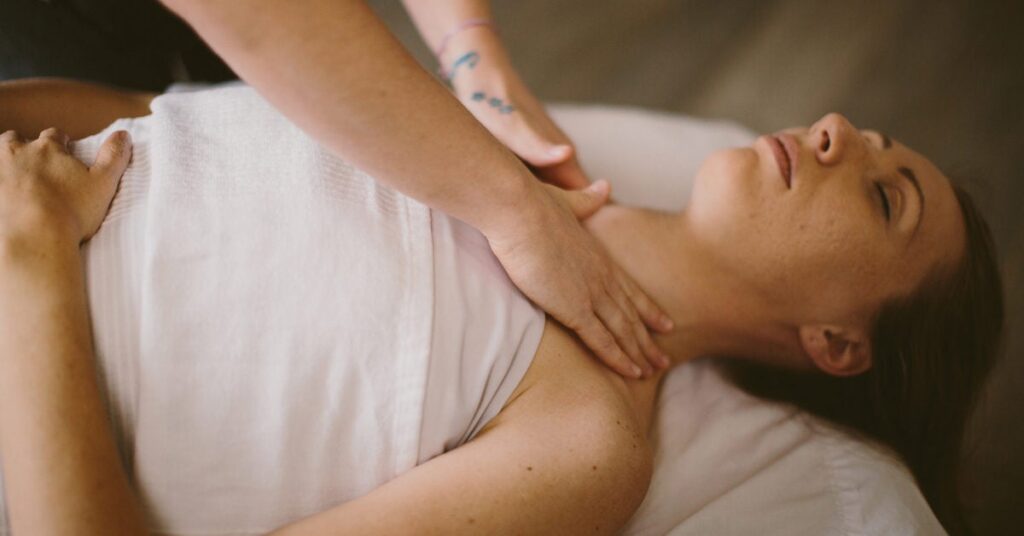Hey there! Are you still feeling some tension in your muscles even after getting a massage? We totally understand how frustrating that can be, and we’re here to help! At our blog, run by massage therapists and enthusiasts, we love sharing our insights and tips on everything related to massages. We know that sometimes even a great massage doesn’t completely loosen up those stubborn knots. But fret not, because in our upcoming article, we’ll be diving deeper into why your muscles might still be feeling tight after a massage. Stay tuned to learn more about this common issue and discover some effective techniques to relieve that lingering tension. If you’ve ever experienced muscle tightness even after getting a massage, you’re not alone. Many people wonder why their muscles still feel tight and uncomfortable even after a session with a professional massage therapist. In this article, we will delve into the reasons behind muscle tightness, the effects it can have on the body, and various massage techniques that can help alleviate this issue.
Understanding Muscle Tightness
Muscle tightness can be caused by various factors such as physical activity, excessive stress, poor posture, or underlying health conditions. When your muscles are tight, they can feel stiff, sore, and restricted in their range of motion. This can affect your daily activities and even lead to discomfort and pain.
Causes of Muscle Tightness
Muscle tightness can occur due to a variety of reasons. It may be a result of overuse or repetitive movements, leading to muscle strain and tightness. Other causes may include poor posture, muscle imbalances, or even dehydration. Additionally, certain health conditions, such as fibromyalgia or arthritis, can contribute to muscle tightness.
Effects of Muscle Tightness on the Body
Muscle tightness can have several negative effects on the body. Aside from the obvious discomfort and pain, tight muscles can also restrict blood flow and oxygen supply to the affected areas. This can lead to decreased flexibility, reduced range of motion, and slower muscle recovery.
Signs and Symptoms of Muscle Tightness
Recognizing the signs and symptoms of muscle tightness is crucial in identifying the issue. Common indicators include stiffness, soreness, limited range of motion, and muscle knots or trigger points. You may also experience muscle spasms or cramps, especially after physical exertion or prolonged periods of inactivity.
Massage Techniques for Muscle Tightness
Massage therapy is a popular approach for relieving muscle tightness. Different massage techniques can target specific areas and provide much-needed relief. Here are three commonly used techniques:
Deep Tissue Massage
Deep tissue massage focuses on applying firm pressure to release tension deep within the muscles and connective tissues. This technique is particularly effective for chronic muscle tightness and adhesions.
Trigger Point Therapy
Trigger points are knots that form in the muscles due to overuse or injury. Trigger point therapy involves applying pressure directly to these knots to release tension and alleviate pain. It can be an effective technique for relieving muscle tightness and improving range of motion.
Myofascial Release
Myofascial release targets the fascia, a connective tissue that surrounds and supports the muscles. This technique involves applying sustained pressure to release tension and improve mobility. Myofascial release can help reduce muscle tightness and enhance overall relaxation.
Benefits of Massage for Muscle Tightness
Regular massage therapy can offer numerous benefits for muscle tightness. Some of these include:
Improved Circulation
Massage promotes increased blood flow to the muscles, delivering essential nutrients and oxygen for improved muscle function and faster recovery. This increased circulation can help reduce muscle tightness and soreness.
Relaxation and Stress Reduction
Massage therapy induces deep relaxation, which can help reduce stress and tension in both the mind and body. By alleviating stress, it allows the muscles to relax and release built-up tension, leading to reduced muscle tightness.
Increased Flexibility and Range of Motion
Massage techniques like stretching and joint mobilization can help improve flexibility and range of motion. By targeting tight muscles and promoting better muscle alignment, massage therapy can help alleviate muscle tightness and improve overall movement.

This image is property of health.clevelandclinic.org.
Factors Affecting Muscle Tightness After a Massage
While massage therapy can provide relief from muscle tightness, certain factors can affect the duration and extent of the results. Understanding these factors can help manage expectations:
Individual Sensitivity and Tolerance
Each individual has a different level of sensitivity and tolerance to touch and pressure. Some may require a deeper or more intense massage to relieve muscle tightness effectively. Communicating your preferences with your massage therapist can ensure you receive the right pressure for your needs.
Intensity and Duration of the Massage
The intensity and duration of the massage session can also impact muscle tightness. A longer and more intense massage may provide greater relief, whereas a shorter session may offer only temporary relief. Discussing your goals and preferences with your massage therapist can help them tailor the session to meet your needs.
Underlying Muscular or Structural Issues
In some cases, underlying muscular or structural issues may contribute to persistent muscle tightness. Your massage therapist may recommend additional treatments, such as physical therapy or chiropractic care, to address these issues. It’s essential to address any underlying problems for long-term relief.
Tips to Prevent Muscles from Remaining Tight After a Massage
To prolong the benefits of a massage and prevent muscles from becoming tight again, consider incorporating these tips into your routine:
Hydration and Proper Nutrition
Staying hydrated and consuming a balanced diet can support muscle health and prevent tightness. Drinking plenty of water before and after a massage session can help flush out toxins and keep the muscles hydrated.
Stretching and Exercise
Regular stretching and exercise can help maintain muscle flexibility and prevent tightness. Incorporate gentle stretching exercises into your daily routine to improve muscle elasticity and reduce the risk of muscle tightness.
Regular Maintenance Massages
Scheduling regular maintenance massages can help prevent muscle tightness from recurring. By addressing minor muscle issues before they become more severe, regular massages can help maintain muscle health and overall well-being.

This image is property of kajabi-storefronts-production.kajabi-cdn.com.
When to Consult a Massage Therapist or Healthcare Provider
While massage can provide relief for many cases of muscle tightness, there are instances when additional intervention may be necessary. It’s important to consult a massage therapist or healthcare provider if you experience the following:
Persistent Muscle Tightness
If your muscle tightness persists despite massage therapy or worsens over time, it may be a sign of an underlying issue. Seeking professional advice can help identify the cause and develop an appropriate treatment plan.
Increased Pain or Discomfort
While some discomfort during and after a massage is normal, if you experience increased pain or prolonged discomfort, it’s important to consult your massage therapist or healthcare provider. They can address any issues or concerns and adjust the treatment accordingly.
Limited Range of Motion
If your muscle tightness is accompanied by limited range of motion or difficulty performing daily activities, it’s advisable to seek professional help. A massage therapist or physical therapist can assess the issue and provide targeted treatment to improve your mobility.
Additional Self-Care Techniques for Muscle Tightness
In addition to regular massages, there are several self-care techniques that can help alleviate muscle tightness:
Heat and Cold Therapy
Applying heat, such as with a warm towel or heating pad, can help relax tight muscles. Alternatively, cold therapy, such as using an ice pack, can reduce inflammation and numb the area, providing temporary relief from muscle tightness.
Foam Rolling and Self-Massage Tools
Foam rolling and self-massage tools, such as tennis balls or massage balls, can help release tension and knots in tight muscles. These techniques can be performed at home between massage sessions to maintain muscle health.
Topical Analgesics and Muscle Relaxants
Topical analgesics, such as creams or gels containing menthol or camphor, can provide temporary relief from muscle tightness. Similarly, muscle relaxants, available over-the-counter or by prescription, can help alleviate muscle tension and tightness.

This image is property of post.healthline.com.
Importance of Open Communication with Massage Therapists
Open communication with your massage therapist is crucial to ensure you receive the most effective treatment. By sharing your sensations and any feedback during the session, they can adjust their techniques to better address your muscle tightness. Communication also involves discussing your treatment expectations and any concerns or questions you may have.
Sharing Sensations and Feedback
During the massage, openly communicate any sensations you experience, such as pain, discomfort, or relief. Your massage therapist can then make necessary adjustments or modifications to ensure your comfort and satisfaction.
Discussing Treatment Expectations
Before each session, discuss your treatment goals and expectations with your massage therapist. They can tailor the session accordingly, focusing on specific areas of tension or incorporating techniques that best address your muscle tightness.
Following Post-Massage Instructions
After your massage, your therapist may provide specific instructions to help maintain the benefits and prevent muscle tightness. This may include stretching exercises, self-care techniques, or lifestyle recommendations. Following these instructions can optimize the results of your massage.
Maintaining a Healthy Lifestyle to Complement Massage Therapy
To complement the benefits of massage therapy, it’s important to maintain a healthy lifestyle. Here are a few key aspects to consider:
Proper Sleep and Rest
Adequate sleep and rest are essential for muscle recovery and overall well-being. Make sure to prioritize sleep and give your body time to rest and rejuvenate.
Eating a Balanced Diet
Eating a balanced diet rich in nutrients can support muscle health and reduce the risk of muscle tightness. Include a variety of fruits, vegetables, lean proteins, and whole grains in your meals.
Managing Stress and Emotional Well-being
Stress can contribute to muscle tightness, so it’s important to prioritize stress management techniques. Practice activities such as meditation, yoga, or deep breathing exercises to help reduce stress and promote relaxation.

This image is property of www.thehubnewmills.co.uk.
Conclusion
Massage therapy can be an effective tool for reducing muscle tightness and providing relief. By understanding the causes and effects of muscle tightness, incorporating appropriate massage techniques, and adopting healthy lifestyle habits, you can significantly reduce the chances of experiencing persistent muscle tightness. Remember, everyone’s body is unique, so it’s important to find the right techniques and strategies that work best for you. By combining various approaches and maintaining open communication with your massage therapist, you can achieve optimal results in your quest to alleviate muscle tightness.
